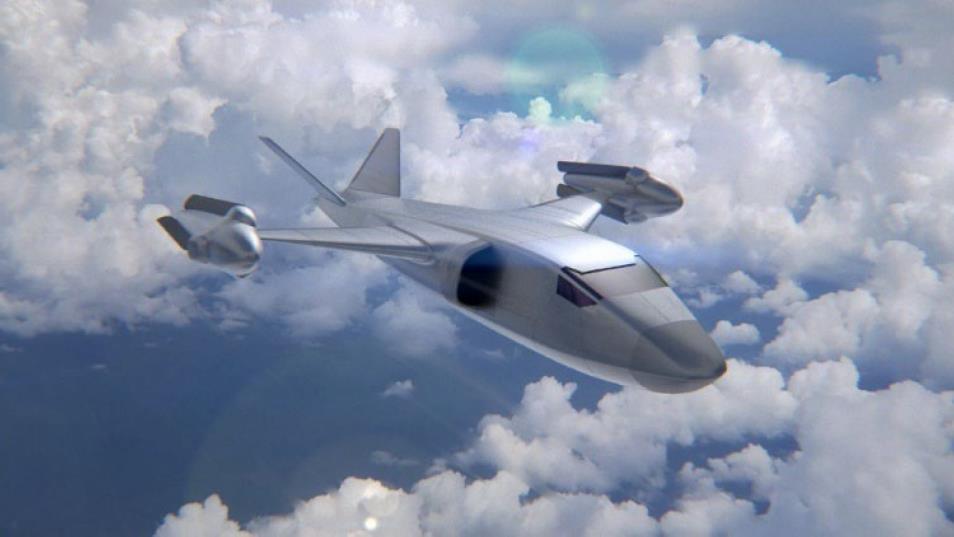EF Global VTOL
03 May 2023

The US Defense Advanced Research Projects Agency (DARPA) has renewed efforts to develop a high-speed, runway-independent VTOL aircraft. On March 9, DARPA’s Tactical Technology Office (TTO) began soliciting proposals for the SPeed and Runway INdependent Technologies (SPRINT) X-Plane project. The SPRINT project is the latest to address highspeed vertical takeoff and landing (HSVTOL) aircraft.
The SPRINT project, a collaboration with US Special Operations Command (SOCOM), will design and validate enabling technologies and integrated concepts that can be “scaled to different size military aircraft,” according to the solicitation (HR001123S0031), which was posted on SAM.gov. The aircraft should be able to cruise at speeds of 400 kt (741 km/h) or greater and at altitudes of between 15,000 ft (4,572 m) and 30,000 ft (9,144 m). The aircraft should be capable of carrying a payload of 5,000 lb (2,267 kg) and of hovering in austere environments.
“I want to do 400 kt, I want to hover, and I want to do that with a squad of people onboard,” said TTO Director Dr. Mike Leahy at the VFS Autonomous VTOL Technical Meeting held in January (see “eVTOL at the 10-Year Mark,” Vertiflite, Jan/Feb 2023). “We’re going to prove out some the key pieces… that key part of how you do — with whatever means you’re doing — coming up, transitioning and coming back.”
DARPA ANCILLARY Notional Concept
DARPA has requested $22.7M for the SPRINT project in its fiscal year 2024 budget proposal. SOCOM has requested a further $25M for the joint HSVTOL project with DARPA in its request. A Proposers’ Day slide (see below) showed two notional concepts: one a folding tiltrotor and the other a fan-in-wing stealth VTOL tailed flying wing transport. DARPA has outlined an aggressive timeline. The agency wants to conduct the first flight of the SPRINT X-Plane within 42 months of awarding a contract for the project. The agency has divided the project into three phases. Phase one will involve a conceptual design and requirements definition and review, while phase two will see the design, build, ground test and airworthiness certification of the X-Plane demonstrator. Finally, phase three will feature the flight test program.
SPRINT is the latest DARPA program to tackle efficient high-speed VTOL aircraft after the STOVL Strike Fighter (SSF) program of the 1980s resulted in the Joint Strike Fighter and the F-35B Lightning II. Additional success, however, has long proved an elusive goal, with dozens of conceptual studies having gone nowhere. Two examples that progressed further were DARPA’s Heliplane program (see “Skyworks Aeronautics: Something Old, Something New,” Vertiflite, Jan/Feb 2022), launched in 2005, and the VTOL X-Plane Project (see “Lightning Strikes Aurora,” Vertiflite, May/June 2016), begun in 2013.
More recently, AFWERX, the Air Force’s technology incubator, held an HSVTOL Challenge with SOCOM, for which it selected 11 companies to proceed with the conceptual development of an HSVTOL aircraft (see “Air Force Picks 11 Companies for High-Speed VTOL Program,” Vertiflite, March/April 2022).
AFWERX’s HSVTOL Challenge and two DARPA seedling studies set the groundwork for SPRINT and helped secure go-ahead funds from DARPA’s leadership. It represents a renewed attempt at achieving what DARPA’s Leahy described in January as a “holy grail” of aviation.
In its fiscal year 2024 budget, DARPA also requested $13.2M for another new VTOL X-Plane, the AdvaNced aircraft Infrastructure-Less Launch and RecoverY (ANCILLARY). The ANCILLARY project, which the agency announced last September, seeks to develop an uncrewed VTOL aircraft capable of operating in confined and austere locations, including small ship flight decks, without the cumbersome infrastructure requirements of current drones (see “Rotorcraft News,” Vertiflite, Nov/Dec 2022). According to a request for information issued last fall, the aircraft should weigh 150–250 lb (68–113 kg) and have a range of 500 nm (926 km). The program is currently in source selection with multiple awards expected later this year.